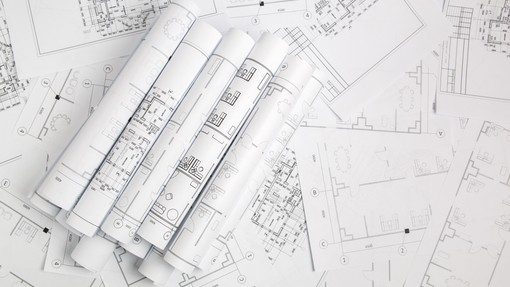DBOTs
what, why, how and when?

DBOTs – what, why, how and when?
Design-Build-Operate-Transfer agreements (DBOTs) are popular in the United Kingdom for large and medium scale development projects. Whereas DBOTs are often associated with public/private partnerships (often referred to as PPPs), this article will focus on DBOTs between private entities.
The principle behind private DBOTs is that one entity undertakes on behalf of another to design, build, operate, and ultimately transfer a facility or development. The end transfer could be back to the original party, or it could be to a new third party that will take the project forward as agreed with the first, granting entity.
DBOTs allow for a streamlined process for private entities looking to contract out specific, technical or costly works on a significant project. Examples are large construction projects like student accommodation, hotels or healthcare establishments, but the model could be used as an enhanced form of housebuilding or as part of schemes intended for eventual public or infrastructure use.
Parties to a DBOT
In context of private DBOTs there are two key players: the grantor and the grantee.
The grantor will typically be the owner of land in the case of a ground-up development, or an existing structure that requires entire redevelopment. A grantor could of course be the owner of both, where the intention of the DBOT is to develop a built environment that maximises on the grantor’s availability of assets.
The grantee will typically be a special purpose vehicle (known as an SPV) that has been created for the DBOT development and which will be the entity taking on the burden of the agreement. It is not uncommon for the grantee to be a subsidiary or affiliate of the grantor, where limiting liability and providing flexibility in structuring the project financing are attractive.
As the fulfilment of grantee obligations under a DBOT requires expertise, experience and the ability to deliver the project on time and on budget, third parties will include suppliers, contractors, sub-contractors, lenders, insurers, regulators, and government authorities.
The benefits of using a DBOT
From the perspective of a grantor, there are various reasons that a DBOT is an appealing option for a private development:
| Consideration | Benefit |
| Single point of responsibility | DBOTs can offer a single point of responsibility for the project, where individual parts of the design, construction, operation, and transfer are handled at a distance by the grantee. Distancing from direct project responsibility allows the grantor reduced accountability for various moving parts (on the basis that the grantee is the expert party, and the party in charge of managing contractors and sub-contractors, taking the liability for the relevant warranties and obligations in those arrangements). |
| Cost certainty | A DBOT allows a grantor to determine project costs in advance, which can be key to ascertaining the proper grantee for the role. Construction costs and operational costs can be expensive, but by delegating responsibilities under a DBOT the grantor can minimise its exposure through provisions already built in. |
| Transfer of risk | Under a DBOT, the grantee is obligated to assume the risks associated with both the construction and operation of the project. Particularly where a project requires complex technical or operational expertise, this transfers the risk associated with managing those expert requirements to the grantee. |
| Long-term benefits | Another point of expertise is the longer-term benefits that can come from ensuring that a DBOT obligates the highest standards at each part of the process – for example, a grantor might have expertise in designing projects, but no practical experience of breaking ground or running the asset. |
| Improved financing | On projects of any scale, one of the biggest considerations for a grantor will be its financing. DBOT can improve financing availability and options for the project as lenders may be more willing to facilitate a project which is backed by a single entity with a properly produced, costed, sub-contracted plan in place for design, construction, and operation. |
The key elements of a successful DBOT
A solicitor instructed to draft and negotiate a DBOT for a private entity will need to consider various parts for the lifecycle of a project, and to prepare for those in advance, ensuring that the agreement effectively allows each phase to join up whilst ensuring some foreseeable elements of change are built in too.
As such, the key elements of a successful DBOT include:
- Quality and cost control must be considered from the outset - and in many ways form the backbone of the DBOT - ensuring that minimum expectations and responsibilities are clear and agreed;
- The grantee will often be required to provide guarantees towards milestones in the build, and then later to ensure the performance of the asset;
- Setting out levels of insurance that must be obtained and maintained by the grantee at each stage of the DBOT, creating limits and indemnities for the grantor in prescribed, risky situations;
- The DBOT must specify the maintenance and repair obligations of the grantee, including schedules of maintenance, the standards which must be attained and then what costs can be recouped without escalation by the grantor in the circumstance that it is posed with any maintenance liability;
- Unilateral and mutual termination rights should be closely negotiated to permit termination in certain circumstances (non-performance, financial events of default and more generally any material breaches);
- It is sensible to establish from the outset what processes are in place for dealing with changes to the project scope, timeline and budget to ensure that these changes (which do often crop up) can be managed efficiently and don’t in themselves cause grantor exposure or knock-on delays to any part of the project;
- Connected to providing for changes during the lifecyle of the project is the importance of building-in robust dispute resolution and escalation procedures for each stage of the DBOT. These procedures will include resolving disputes between the grantor and the grantee, or between third parties and the grantee, or with each other (to the extent that the project will be impacted by those disputes). Of particular note is the value of working out the arbitration provisions in the DBOT, including the choice of law and forum for arbitration; and
- Throughout the life of the project there will be various items of intellectual property (for example specifications, designs, drawings, licences for the operational part); provisions for managing the ownership of each and transfer rights affecting each should be considered in the DBOT.
Next steps
As this article has set out, DBOTs can be an extremely valuable and practical option for owners and developers looking to undertake a project that requires clear, efficient framework.
If you are a landowner or have an interest in structuring a development or redevelopment, or would like more information on DBOTs or their alternatives, please get in touch with us at Hill Dickinson LLP.






